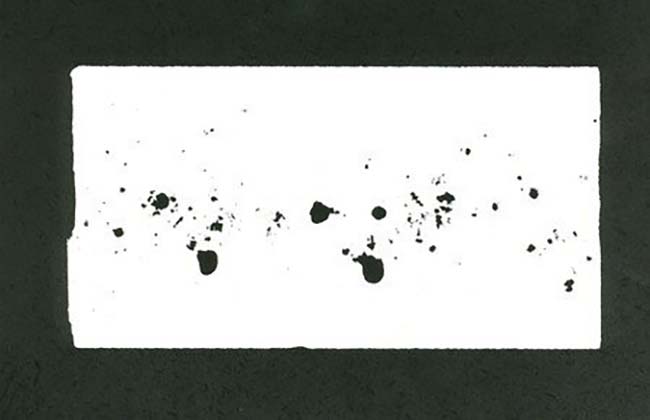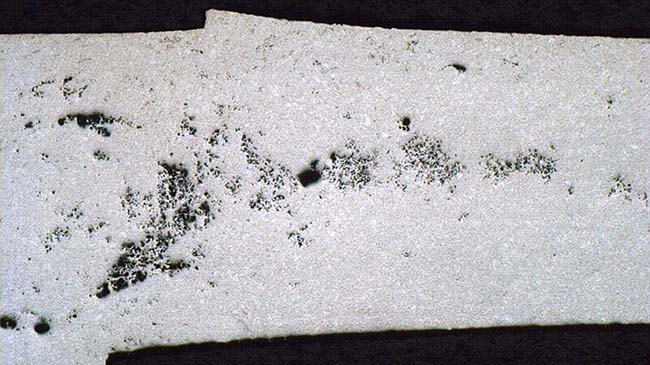Solutions to diecasting defects
The purpose of die casting is to pass molten metal in liquid form at high speed through a small gap in order to fill the shape made in a mould. This filling of a few hundredths of a second has to be done faster than the solidification of the metal which freezes as it cools in the mould. This technology generates the following three main types of problems: blowholes or porosities, frontage, shrinkage.
1- Blowholes / porosities :
At the time of injection, the mould and the container contain gases (air, oxygen, hydrogen) which must be evacuated as much as possible to avoid being trapped in the part in the form of bubbles under pressure.
Solutions to minimise blowholes/porosities :
By the design of the mould :- Provide a large venting area for the mould through the feeders. The positions of the vents are important because a feeder that is filled at the beginning of the injection process no longer plays its role. It is necessary to look for the end of filling zones and place feeders that will be useful until the end (use of Chill-Vent (massive air draft), implement a vacuum system as a last resort).
- Increase the fill rate of the container to minimise the air trapped in the chamber.
- Provide short, thick arms to allow a hot channel to be maintained and transmit the pressure that will compress the metal.
- The thermal regulation system of the mould which must avoid the use of the post to cool the mould (reduction of the cycle time and preservation of the mould by avoiding thermal shocks).
- Second phase speed too slow, which will not allow liquid filling, with local risks of solidification and consequently poor homogeneity of the compression.
- Second stage speed too fast, which does not allow time for the air to leave the mould cavity. Check the correct operation of the vents, which can become clogged at the parting line.
- Residual liquid due to over-posting with a lack of blowing.
- The temperature of the mould must be high enough to remove moisture from the evaporating staking solvent on the mould which can produce gases on contact with the molten metal.
- Check the lubrication of the piston as too much grease in contact with the molten metal will produce gases.
- Program a first phase that controls the wave front in the container to avoid air entrapment.
- Degassing of the metal in the furnace.
2-Frontage:
The metal front (the front of the metal that pushes the air and the gases from the container's staking and lubrication in front of it) must, depending on the obstacles in the cavities, split into several streams of molten metal. The latter will meet later in different temperature states, making it impossible to re-solder homogeneously. It is possible to imagine the bypassing of an obstacle by two metal paths that do not meet at the same temperature conditions, leading to a boundary between the two metal streams after solidification. Another problem is that the metal fronts can trap air pockets and create blowholes.
Solutions to minimise frontage:
By the design of the mould :- A filling simulation can help to understand the path of the metal in the cavity
3-Shrinkage :
Most metals have a volume contraction when they go from liquid to solid. For example, aluminium has a shrinkage of about 1%. This shrinkage occurs in all directions but starting with a guard from the surface (skin) of the part. Indeed, the difference in temperature between the mould and the metal means that the latter freezes first on contact with the steel of the mould. The skin of the part that solidifies first therefore has little shrinkage which is concentrated in the massive areas (to be limited to the design of the part) at the end of solidification. Consequently, if you want little porosity in an area, it should be placed within 0.4mm of the edge of the part. Machining beyond this 0.4mm thickness will reveal shrinkage and porosity.
This problem of shrinkage and porosity is minimised by compressing the metal at the end of the injection moulding process by a third stage to complete the volume of metal that has contracted. For the compression to work, this compression force must be transmitted to the part by the runner arms and the leading edge. In concrete terms, the metal must still be soft to move in the mould. If this is not the case, the third stage will have no effect.




